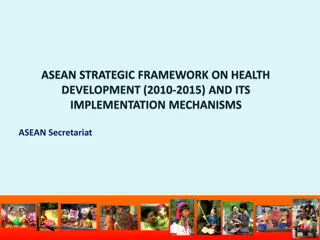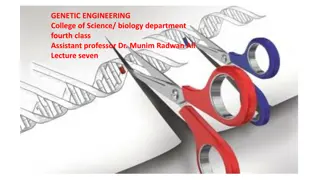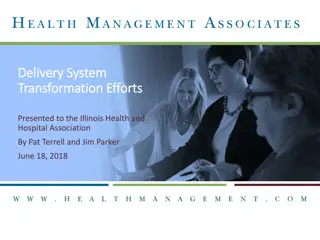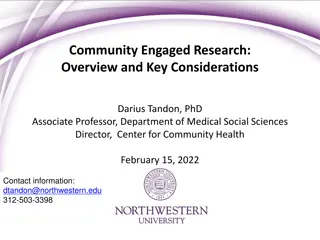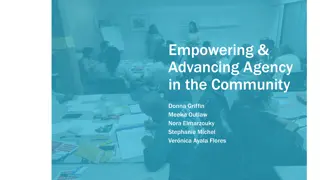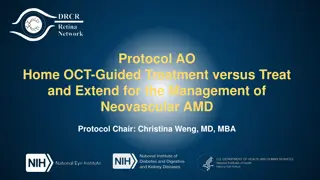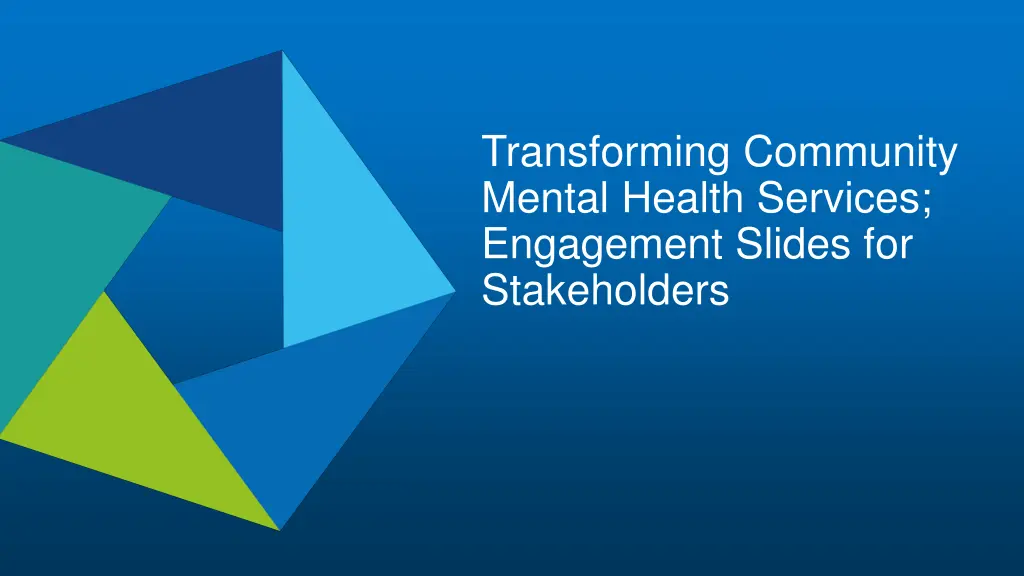
Transforming Community Mental Health Services for Stakeholders
"Explore the new model for community mental health services, focusing on integrated core networks and improved patient outcomes. Learn about the National Collaborating Centre for Mental Health's Framework for Adults & Older Adults and NHSE&I Transformation Funding. Discover the common principles and objectives for transforming community mental health services in NCL. Engage with the vision of creating a proactive and flexible community-based mental health care model. Join the movement in removing barriers, improving access to care, and enhancing overall well-being for individuals with mental illnesses."
Download Presentation

Please find below an Image/Link to download the presentation.
The content on the website is provided AS IS for your information and personal use only. It may not be sold, licensed, or shared on other websites without obtaining consent from the author. If you encounter any issues during the download, it is possible that the publisher has removed the file from their server.
You are allowed to download the files provided on this website for personal or commercial use, subject to the condition that they are used lawfully. All files are the property of their respective owners.
The content on the website is provided AS IS for your information and personal use only. It may not be sold, licensed, or shared on other websites without obtaining consent from the author.
E N D
Presentation Transcript
Transforming Community Mental Health Services; Engagement Slides for Stakeholders
The Community Framework for Adults and Older Adults The National Collaborating Centre for Mental Health (NCCMH) have developed guidance for a new model for community mental health services here The Framework is a radical change towards integrated core community mental health networks primary care, secondary care and wider community services brought closer together Networks will be multiagency, multidisciplinary, and include the voluntary and community sector, Local Authority services, social care, primary care etc. LTP commitment for expanded community teams, delivered around Primary Care Networks on a neighbourhood level, with strong links to more specialist services
Transforming Community Mental Health Services within NCL The aims to be achieved through emerging new models include: Improving patient experience and outcomes That people with SMI will have improved access to mental health support and improved care coordination That care and support delivered will be truly orientated towards the promotion and maximisation of individuals health, wellbeing and independence That health inequalities often faced by people with SMI will be reduced That new community models will deliver true integration of care and support across secondary MH services, the VCS, primary care, social care, community assets as well as other physical healthcare provision.
Common principles of NCL community models (draft) NHSE guidance (October 2020): Mental health providers are being asked to lead transformation of community mental health services (CMHS) in partnership with PCNs and CCGs, as well as local authorities and the Voluntary, Community and Social Enterprise sector (VCSE), service users, families, carers and communities, to create a new, flexible, proactive model of community-based mental health care for people with moderate to severe mental illnesses across a range of diagnoses and needs, in line with the Community Mental Health Framework for Adults & Older Adults. New NCL models must: Remove the barriers that service users currently experience between primary and secondary care including to improve physical health care for people with severe mental illnesses and between different secondary care community teams Ensure that people can access care, treatment and support at the earliest point of need Be accessible to all regardless of age, diagnosis, condition, co-existing needs, ethnicity or socio-economic status Proactively address health inequalities (e.g. SMI physical health, BAME communities) Address the social determinants of health and wellbeing and overall quality of life including social isolation and issues relating to employment, finances, benefits and housing Be based on cross-sector collaboration including with local authorities, the voluntary sector, housing and substance misuse services Include a significant role for the voluntary sector in prevention, recovery and community participation Provide strengths-based, personalised and co-produced care, with a single care plan Be co-produced with people with lived experience, as well as carers and local communities Provide evidence-based and trauma-informed care Optimise data and information sharing across organisations
What benefits should the new model bring What it can be like at the moment What we want it to be like in the new model Siloed care pathways, with large gaps between secondary mental health services and primary care. Integrated support across primary-secondary care boundaries to manage fluctuating needs, with flexible stepping up / stepping down of care based on intensity of input required. Long waits for access to care, rejected referrals and hand-offs between services. Shorter waiting times; removal of arbitrary exclusion criteria; proactive and inclusive care including for co-existing needs (such as substance misuse). Multiple teams with thresholds and different exclusion criteria: a team for everything but a place for no one . Single, coherent integrated model with seamless, clear offer and a named key worker for all. Lack of responsive, accessible care leading to avoidable crises, admissions and detentions. A flexible, easily accessible and varied biopsychosocial community-based offer to keep people with SMI well in their own homes and communities. Particularly, limited support for people with complex or specific mental health needs such as eating disorders or personality disorder . Improved timely access to evidence-based holistic care for specific and complex needs. CMHTs lacking a clear sense of purpose and identity, expected to do too much with too little Renewed sense of purpose for community-based services operating in line with the CMH Framework, working in an integrated and multidisciplinary whole system with partners across and outside of the NHS to improve the lives of people with severe MH problems
Coordinating model development at a borough and NCL level Centrally determined OVERARCHING PRINCIPLES MEASURES OF SUCCESS EVIDENCE BASE (e.g. NICE) EVALUATION CRITERIA FUNDING MUST-DOs Enfield Barnet Islington Camden Haringey Locally determined PCN PCN PCN PCN PCN PCN PCN PCN PCN PCN PCN PCN PCN Innovation in design and delivery, partnerships, ICP engagement, population needs, community assets PCN PCN PCN PCN PCN PCN PCN PCN PCN PCN PCN PCN PCN PCN PCN PCN PCN LEARNING NETWORK & COMMUNITY OF PRACTICE
Developing multi-agency practice and a shared ethos Using a single, holistic care plan that is owned by the individual, shared across boundaries and involves the right care and support from across the network To cover: Relationships Accommodation Mental health Physical health Practical support Contact with services Medication Personal safety Friendships Leisure activities Employment and a system wide assessment and outcome tool, such as DIALOG
Emerging VCS prevention role in the model Creating truly blended teams / offer Organisational strengths approach Coordination and maximisation of resources and simplified pathways Single referral and no wrong door approach Relational bridge between statutory services and wider community Meeting a broad range of psychosocial needs The importance of holding relationships Co-production and development work with local communities & organisations to respond to local need and inform service development Central role in making use of and reaching out to the whole community Presentation title and date here 10
Questions 1. Access to mental health services can be challenging what would make a difference here? 2. How can services be more joined up across LA, NHS and community; physical and mental health; primary and secondary care 3. What are the gaps and opportunities for change in the new model? Presentation title and date here 11








